Fill Bottom Of Deep Raised Garden Bed With Organic Materials
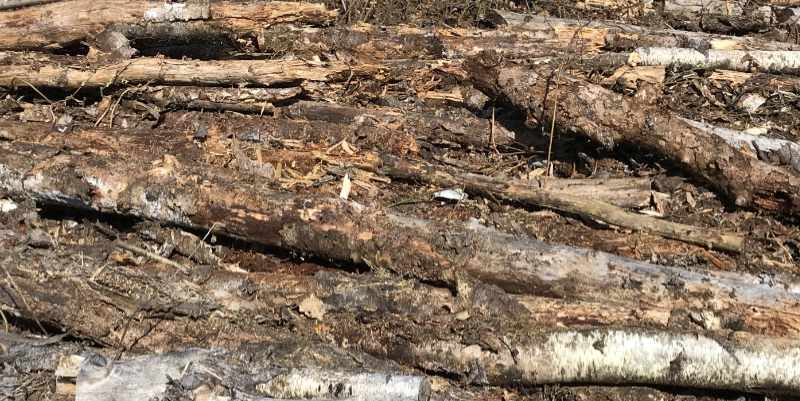
I’m building three additional fairly deep raised garden beds. You might consider covering the bottom with organic materials. That is, before you add the soil. Why? For the organic goodness, and, save some money on garden soil (assuming you’re buying it).
I took some pictures of what I just did for the purpose of this post. Maybe it will help someone out there with this idea.
I live in northern New Hampshire. We have rocky, sandy soil (generally speaking). We’re called the granite state for a reason… There are pockets of pretty good top soil, while there are also areas that are not so ideal for using in a raised garden bed. Consequently for some, it’s best to buy garden soil for a new raised garden bed. Then, each year, amend that soil with compost to keep it nutrient rich.
Okay, back to the new raised garden beds… I built them with 2x8x8′ lumber, stacked two boards tall. So, that’s 14.5 inches tall. Therefore, it helps a little on the back – bending over compared with just one board tall. But here’s the thing… How much dirt do you need to fill a raised garden bed of that dimension and height? Well, it’s simple math:
Square feet x height = volume
Each of my raised garden beds would require 32 cubic feet of soil, if I filled it a foot deep (8′ x 4′ x 1′). A little bit more for mine, given that it’s a bit taller. The amount you will actually need may vary somewhat depending on the soil you buy, because there is (in my experience) variability as to how a manufacturer quantifies their soil. How compressed is it when they claim 1 cubic foot per bag? Or 1.5 cubic feet per bag? Anyway, that’s not the point I’m trying to make. Rather, I’m giving you a tip how to save some money on garden soil in raised garden beds, and, the goodness that this will bring to your garden…
Here’s what I did:
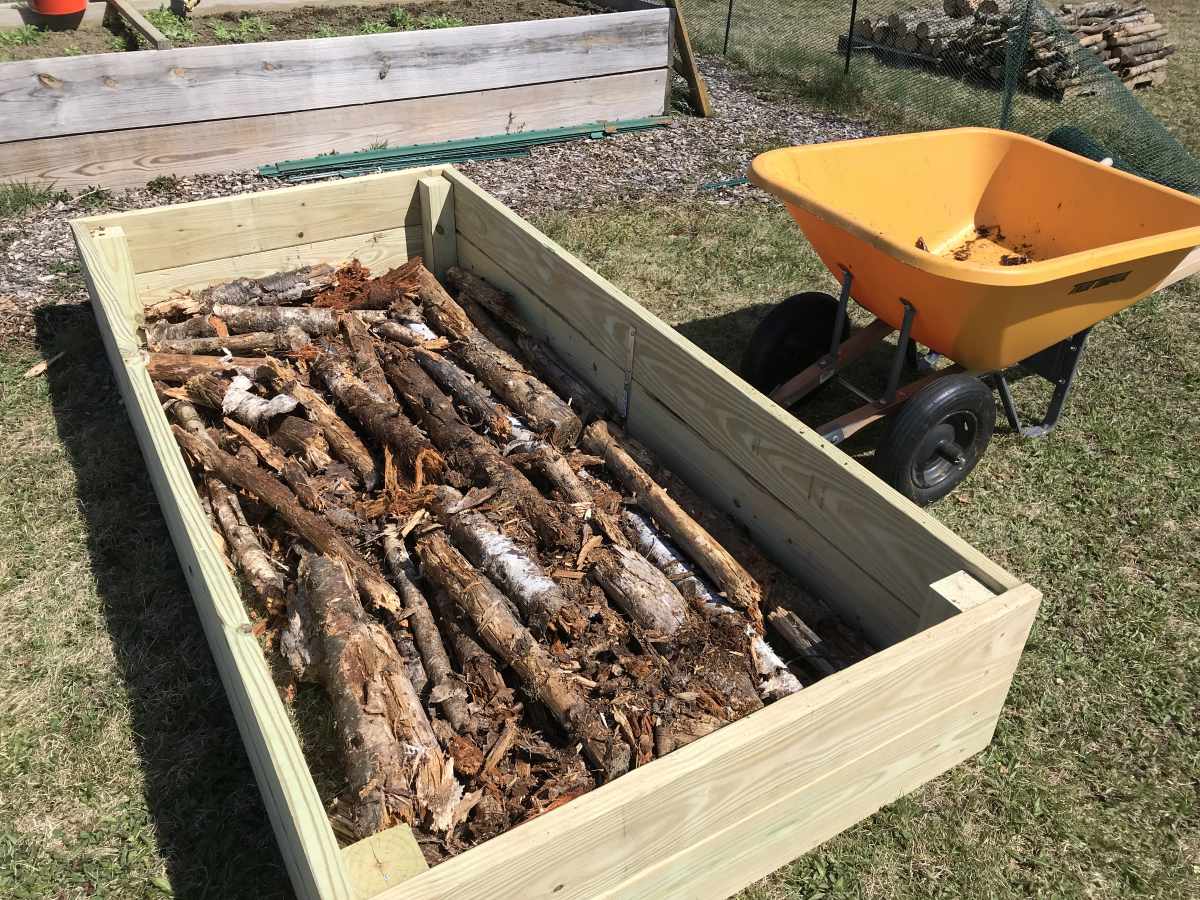
I have a lot of trees on the property here at the homestead. A combination of softwoods (spruce, fir, etc.), birch, and maple. The tree ecosystem is always in cycle — birth, growth, maturity, end-of-life, and weather events blowing them over. As a result, when trees finally fall, they will eventually rot in the ground. Because of this, I don’t have to wander far on the property to come across rich organic rotting wood in various stages of decay.
I gathered enough of it to place at the bottom of my new raised garden beds.
Organic Rotting Materials Creates A Rich Ecosystem For Raised Garden Beds
You can put in just about any organic materials at the bottom. This might include leaves, branches, rotting logs and limbs, compost, etc..
These materials will invite worms, bugs, and microscopic organisms all good for your garden. Over time, these will continue to decompose, further feeding the system. Plus, as a side bonus, you’ve saved some money on garden soil.
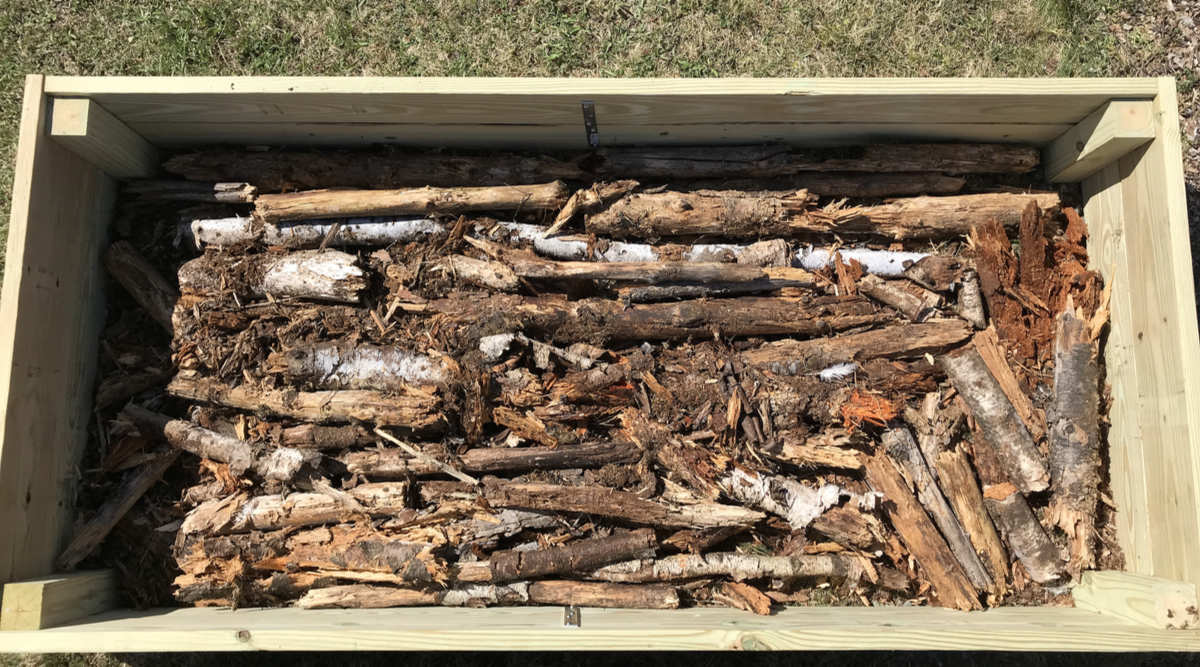
Time to fill the raised garden beds. Made the trip to Home Depot and picked up a pallet of Vigaro general purpose garden soil. Drive home, back up the truck to the raised garden bed, lay a bag on the tailgate, slice the end open, let gravity do the rest…
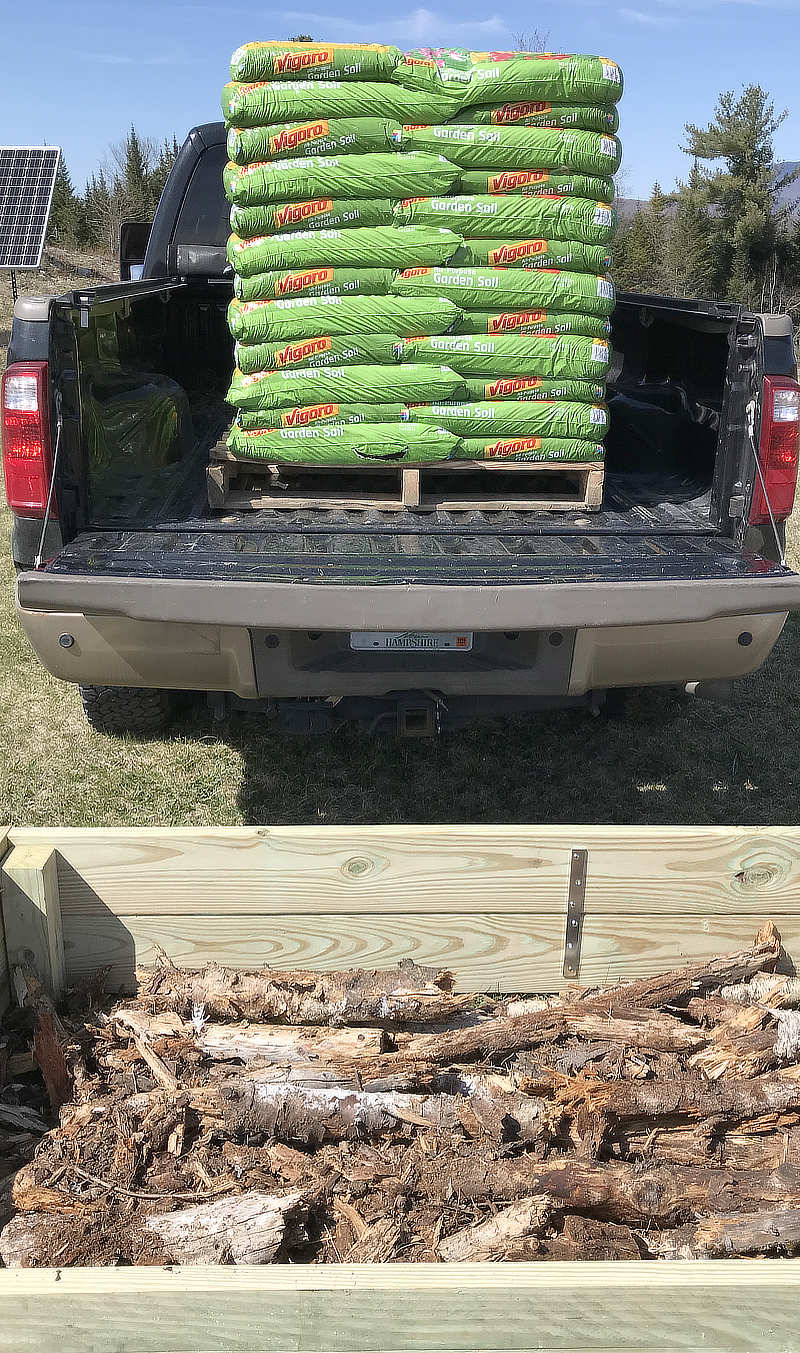
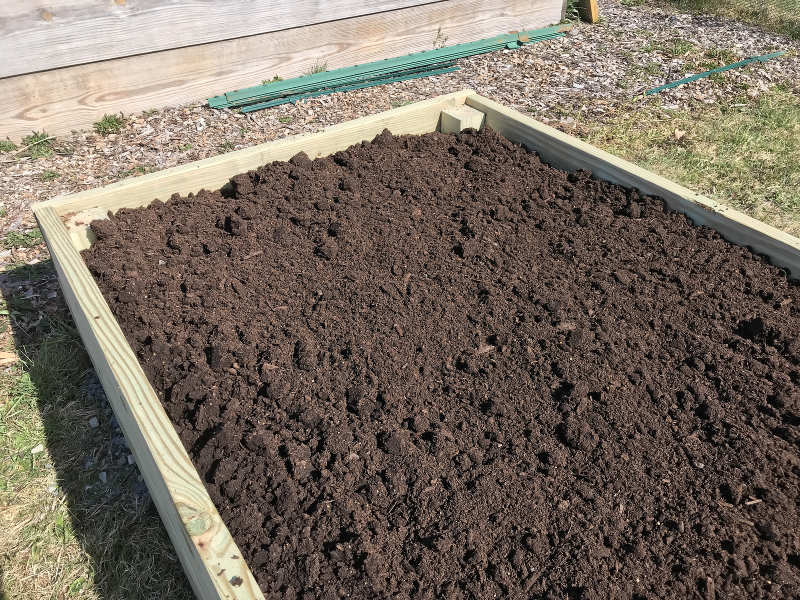
Have any of you done something similar to this? What organic materials did you use?
